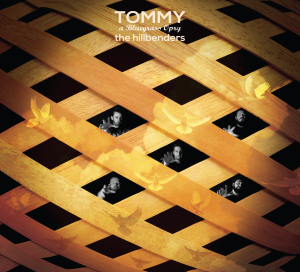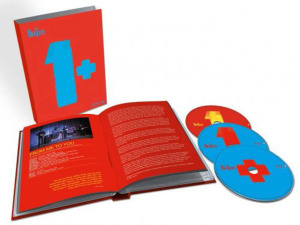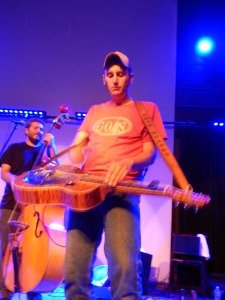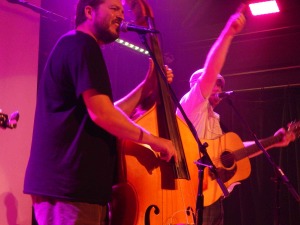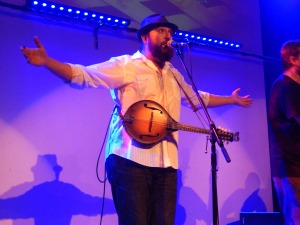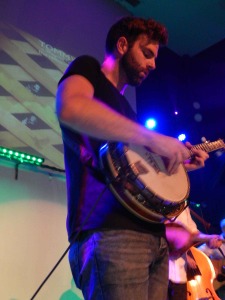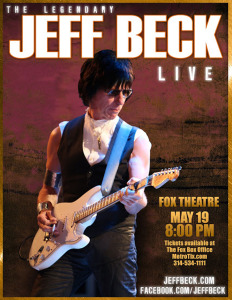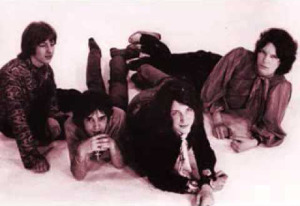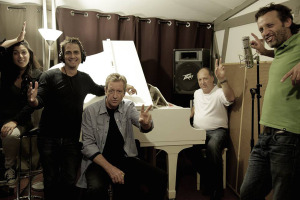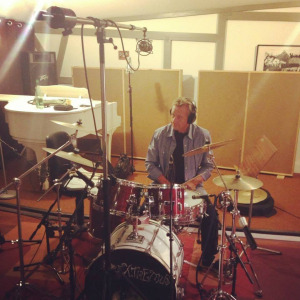(Compass Records; 2015)
Ambition is an awesome thing. In music, it often leads to groundbreaking work or concepts, and this here album from Springfield, Missouri bluegrass band the Hillbenders is a doozy in that regard. The notion of doing a bluegrass interpretation of the Who’s legendary TOMMY album seems preposterous at first… how could the sonic intricacies and intense storyline of Pete Townsend’s magnum opus be re-interpreted in such a different genre, one as down to earth as Ozarks-style bluegrass? The fact that it works so well says a great deal about the abilities (and pure ATTITUDE) of this band – guitarist Jim Rea, mandolinist Nolan Lawrence, dobro player Chad Graves, banjo player Mark Cassidy and bass player Gary Rea. Pete Townsend himself gave a thumbs-up to the record and invited the band to a show on the Who’s recent tour, doing photos with them. So yeah, this crazy project is a success. But how does it SOUND? Well, the amazing thing is that the band largely sticks to the structure of the original songs. It’s just that in place of electric guitars, Roger Daltrey’s peerless vocals and Keith Moon’s powerhouse drumming, you get, well, acoustic instruments like banjo and dobro. There are no long, jammy bluegrass workouts of the type often seen in the genre… the Hillbenders adhere to the original song structures. That is striking on tracks like the magnificent “Overture,” the carefully rendered “Amazing Journey” (which really IS amazing in this sassy, grassy rendition) and the classic “Pinball Wizard,” a rousing performance in which the band makes sure their energy matches the original, and renders the concern about whether a banjo and mandolin could possibly match what Pete did on the original absolutely moot. “Tommy, Can You Hear Me” is delivered simply and soulfully, with perfectly pleasant harmonies. “Sally Simpson” becomes a truly curious hybrid, a song that, thematically, would likely never see its ilk on another bluegrass album. I mean, this is rock and roll in its energy and pure panache. What a revelation to hear the Who’s richly layered classic rock presented in such a different manner. It says something about the universality of music and themes that the Hillbenders could pull this off so thrillingly.
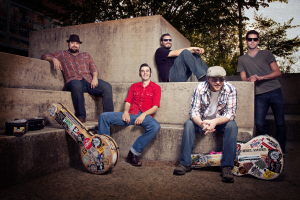
Not everything brings the awe, though. Daltrey’s haunting “See Me, Feel Me” performance in its two appearances on the original is a work of vocal majesty that inevitably loses something in the simpler, more rustic approach taken here. Similarly, the drama and shifting elements of “Welcome” as a composition are diminished in this arrangement… maybe by this point, the sound is just getting too samey. And “We’re Not Gonna Take It” is missing an edge it badly needs. But gosh, songs like “Christmas” and especially, “Sensatiion,” are utterly inspired and perfectly performed by the Hillbenders, giving fresh life to compositions that most of us from the classic rock era know like the backs of our hands. There is something revolutionary about hearing a modest Ozark string band fearlessly take on a classic rock opera by legendary Brits, and do it with their own personalities and aesthetic intact, triumphantly. It’s a bold leap into rarified musical territory, and it proves once again that all things are possible if you’ve got courage, chops and, well, a pretty awesome source work. Here’s to the Hillbenders for TRULY “kicking out the jams” in every way.

